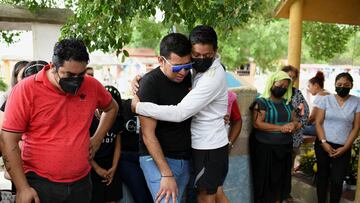What are the reasons for the war against journalists in Mexico? Drugs, Media, Narcos
The deadliest country for journalists outside of a warzone has a growing problem and critics say the government is doing little to protect them.

Journalists are always at risk doing their profession. They are important in encovering government corruption, shining a light into warzones, and telling stories that need to be told. The recent killing of Al Jazeera journalist Shireen Abu Akleh by Israeli forces just two days ago highlights this function and the measures governments will go to attack those who try to hold them accountable.
Journalists are under threat everywhere. On Monday, two journalists, Yesenia Mollinedo Falconi and Sheila Johana García Olivera, were murdered in Mexico in what The Guardian described as an “unrelenting slaughter of Mexican journalists.” In the first five months of the 2022, 11 journalists have been murdered. Seven were killed throughout the entirety of 2021.
“This year is on track to be the deadliest ever for journalists in Mexico,” said Tyler Mattiace, Americas researcher at Human Rights Watch.
There are many aspects to why Mexico has become such a dangerous place for journalists. The nation has long been under the thrall of narco-traffickers and organised crime, but the presidency of Andrés Manuel López Obrador has been criticised for its lack of support for journalists as well as being accused of supporting the violence with his public denunciations.
A president willing to hang journalists out to dry
Since his accession to the presidency in 2019, Andrés Manuel López Obrador has done little to prevent the killing of 96 journalists in Mexico. His critics say he has in fact inflamed and encouraged violence against them by what he says in public.
“President López Obrador has not only failed to address violence against the media, but he has used his daily morning news conferences to harass and intimidate journalists,” Mattaice continued.
“There are very few journalists who are complying with the noble vocation of informing. We have to be vigilant [and] show them to be biased, a sell-out press who work for a greedy minority,” López Obrador said in the wake of a protest to demand better protections for journalists. In another instance, he described the killing of Marcos Ernesto Islas Flores, a journalist in Tijuana, as the creation of a “media campaign” and said the coverage was proof that the press was attacking him.
A nation in the grips of the drug trade
Tijana, where Marcos Ernesto Islas Flores was killed, is known as the murder capital of Mexico. The average is five murders everyday, creating an impossible work environment for journalists. They are targeted for their work in exposing those involved in the drug trade.
“It’s a message. Not even outside your house are you safe,” Jordi Lebrija, a Tijuana journalist, said, “We are looking at you. We know who you are. We know what you do. That’s the message for journalists.”
Furthermore, and perhaps linked to the drug trade in the country, Mexican courts have been unwilling to prosecute those who stand accused of murdering journalists. Created in 2010, the federal Special Prosecutor for Crimes Against Freedom of Expression (FEADLE) has led 105 investigations into the killings of journalists. Only six have led to a conviction.






